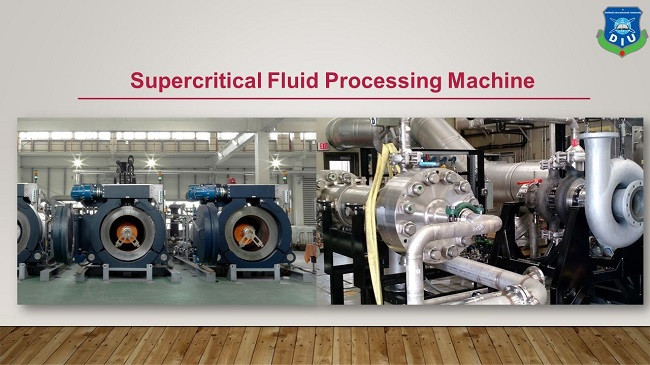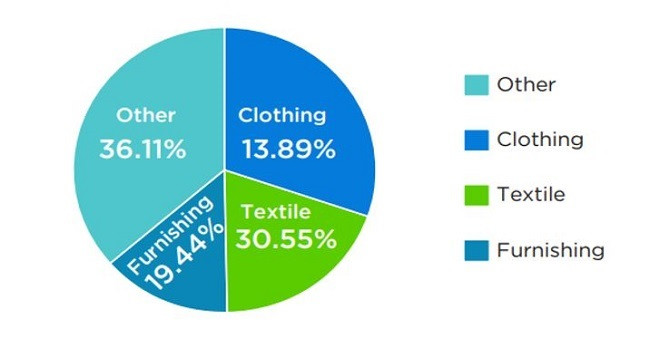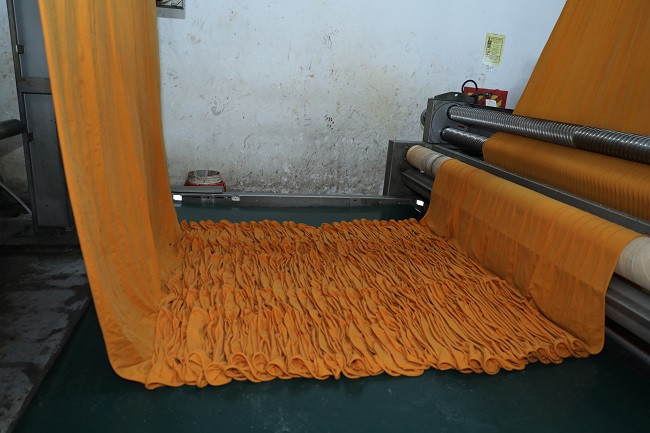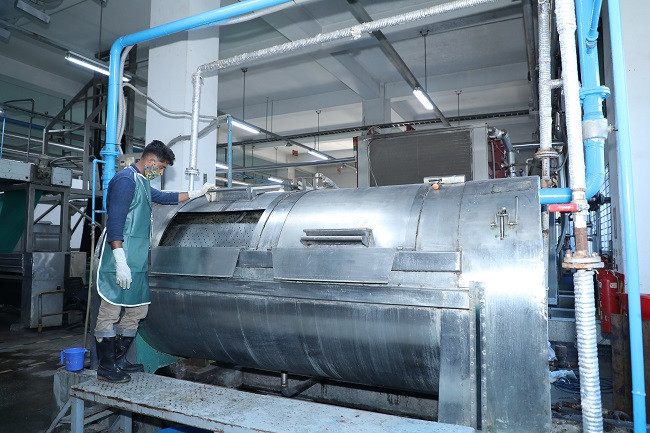Roughly 60% of mankind lacks access to clean water assets and climate change imposes a threat to worsen the problem. The textile industry, a major water consumer, faces a formidable challenge due to water scarcity and changing environmental conditions.

Nowadays the garments buying developed countries are demanding eco-friendly textile products. This changed demand is putting pressure on brands and retailers to show that their supply chains are clean and transparent. Governments are also mandating strict environmental legislation and enforcing pollution laws. Despite these efforts, the traditional methods of textile production remain highly water-intensive and energy-consuming.
For instance, in conventional methods, an extensive proportion of 20% or more of water is used solely during the dyeing phase. To dye just one kg of cotton fabric, nearly 100 liters of fresh water and a very high amount of energy are required. To solve this problem the manufacturers are adopting new technologies to remain competitive while reducing water usage to contribute toward greener solutions.
Supercritical fluid dyeing (SFD) technology can help achieve sustainable processes. SFD is a waterless dyeing process that exploits the unique properties of supercritical fluids. A supercritical fluid is maintained at a temperature and pressure above its critical point. It exhibits both the gaseous property of being able to penetrate anything, giving a swelling and plasticizing action and the liquid property of being able to dissolve materials into their components.

This phase of a substance enjoys many advantages and can replace the water in the dyeing process. Carbon dioxide (CO2) is particularly attractive as it is cheap, non-flammable, nontoxic, and its critical point (Tc = 31.1 °C, Pc = 73.7 bar) is lower than that of many other fluids.
SFD has come a long way since its inception in the late 1980s. Initially, it was a technology limited to small-scale production and faced significant challenges in dyeing various types of fibers. In its early stages, SFD was primarily compatible with synthetic fibers like polyester but struggled to dye hydrophilic natural fibers such as cotton, wool, and silk due to the non-polar nature of the supercritical carbon dioxide solvent.
Recent advancements have brought about a significant transformation in SFD, making it a feasible choice for large-scale industrial applications. A company called Dyecoo has emerged as a pioneering supplier of industrial equipment and dyes specifically designed for CO2 textile dyeing. Dyecoo’s equipment can accommodate a wide range of synthetic fabrics and yarns. Another notable breakthrough is SUPRAUNO®, a patented sustainable super critical CO2 based dyeing and finishing technology developed by Deven Supercriticals, which enables the dyeing of not only polyester but also various other man-made and natural textiles, such as nylon, aramid, acrylic, viscose, cotton, linen, silk, and their blends. This innovative solution allows for the waterless use of conventional dyes and traditional tri-chrome recipes.
Compared to its early stages, modern SFD technology offers several advantages. It eliminates the need for reduction clearing for polyester, eliminates the use of salt for cotton dyeing, improves overall dye utilization, enables single-bath dyeing of textile blends, and significantly reduces the use of auxiliary chemicals by up to 90%. This not only makes the process more environmentally friendly but also offers economic benefits for larger plants and multi-vessel designs due to higher capacity capabilities.
The advantages SFD offers are:
Bid farewell to water woes
Conventional dyeing and finishing processes consume millions of gallons of water, mostly due to multistep processes that are largely inefficient. Whereas SFD completely replaces water with supercritical CO2 to solvate dye. This results in significant water savings.
A waste water free future
About 17% to 20% of industrial wastewater in the world comes from the textile industry, specifically from dyeing and finishing processes. Addressing these major environmental concerns associated with traditional dyeing processes SFD comes into play. Since water isn’t involved in SFD, it eliminates the generation of aqueous dyeing effluents loaded with chemicals and dyes.
Minimizing chemical footprints
Since SFD utilizes supercritical CO2 as the solvent, there is no need for auxiliary chemicals such as dispersing or levelling agents typically used in traditional dyeing processes. This not only reduces chemical usage but also minimizes the generation of harmful chemical waste.

Reuse and recycle: a closed-loop system
In SFD method the supercritical CO2/dye mixture is depressurized, to transform the CO2 into a gas leaving no solvent residues in the fabric. This process effectively separates the dye particles that are not retained in the fibers and can be reused in subsequent dyeing cycles. This innovation addresses the challenge faced by the global textile industry, which uses traditional dyeing methods resulting in approximately 280 kton of textile dyes being dumped annually. Additionally, the CO2 can be recycled and reused creating a completely closed system and an entirely environmentally friendly approach to textile dyeing.
Reduced energy expenditure
The elimination of heating of the dye bath contributes to huge energy savings in SFD method compared to traditional system. In addition, after depressurization, the dyed fabric is extracted dry, eliminating the subsequent rinsing and drying processes which makes it more efficient and environmentally friendly.
Cost-effectiveness
Supercritical CO2 is a relatively low-cost, non-toxic, and non-flammable solvent compared to traditional dyeing chemicals. This makes SFD economically viable and attractive for textile manufacturers seeking cost-effective and sustainable production methods.
Faster production
Supercritical fluid has gas-like low viscosities and diffusion properties, which can lead to shorter dyeing times compared to traditional methods, increasing production efficiency.

Improved dye penetration
Supercritical CO2, with its low viscosity and high diffusion properties, acts as an ideal dyeing fluid. It readily dissolves solid dyestuffs and penetrates even the finest pores of fibers without requiring vigorous convection procedures. This enhanced penetration leads to deeper and more vibrant colors, making supercritical fluid dyeing a promising alternative for sustainable and efficient dyeing processes.
The progress made in SFD technology has created opportunities for sustainable and efficient dyeing in different textile sectors, although difficulties persist in dyeing certain high-performance fibers with intricate molecular structures. SFD technology offers compatibility with a wide range of fibers and can be implemented on an industrial scale, making it a promising solution to meet the increasing demand for eco-friendly textile production. However, still textile manufacturers of Bangladesh are hesitant to adopt SFD technology due to the initial high costs, complex equipment requirements, and the challenge of sourcing dyes that can dissolve in supercritical fluid. Despite these obstacles, the advantages of SFD technology, such as environmental benefits and cost savings in production, outweigh the challenges and contribute to its appeal in the textile industry.
















